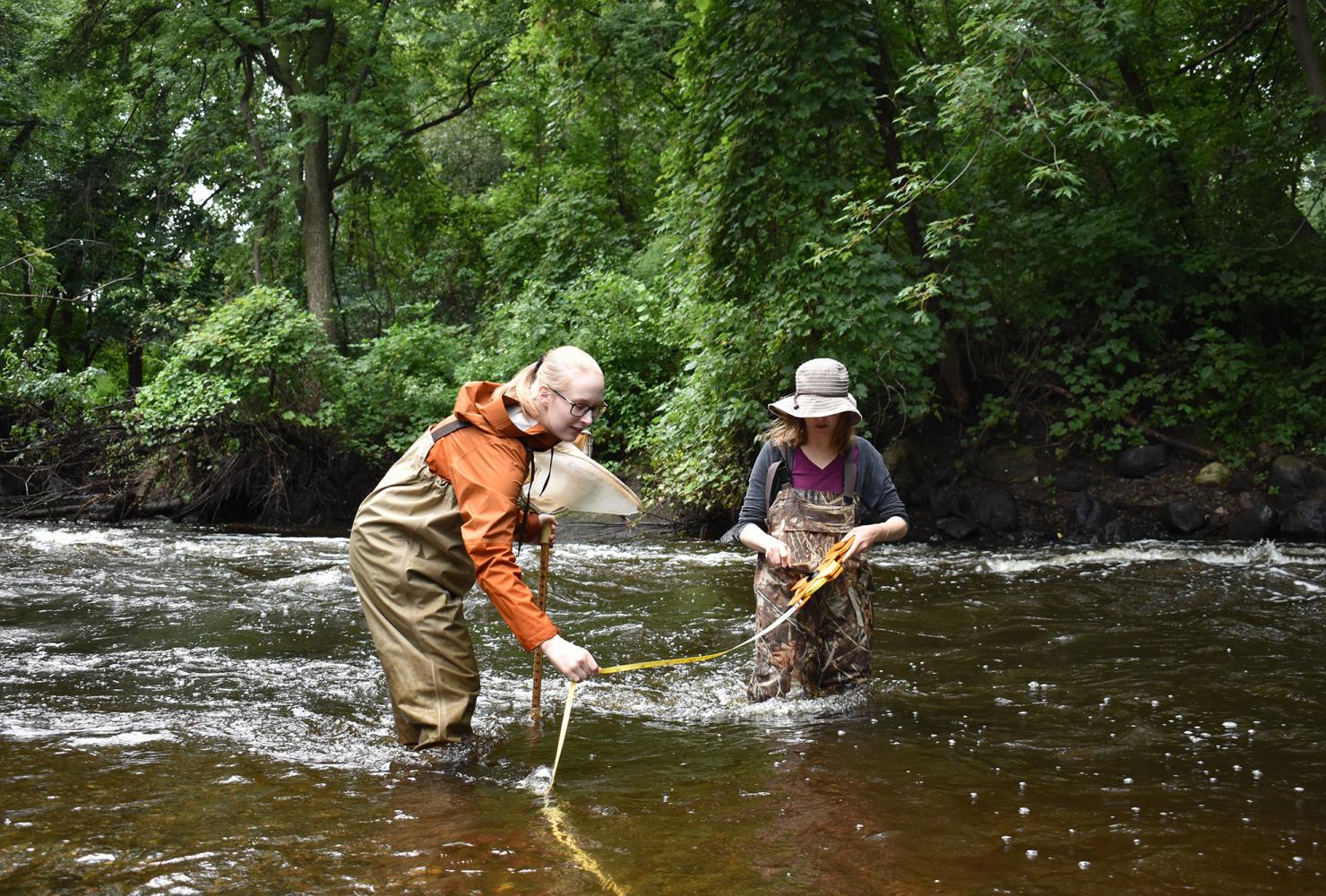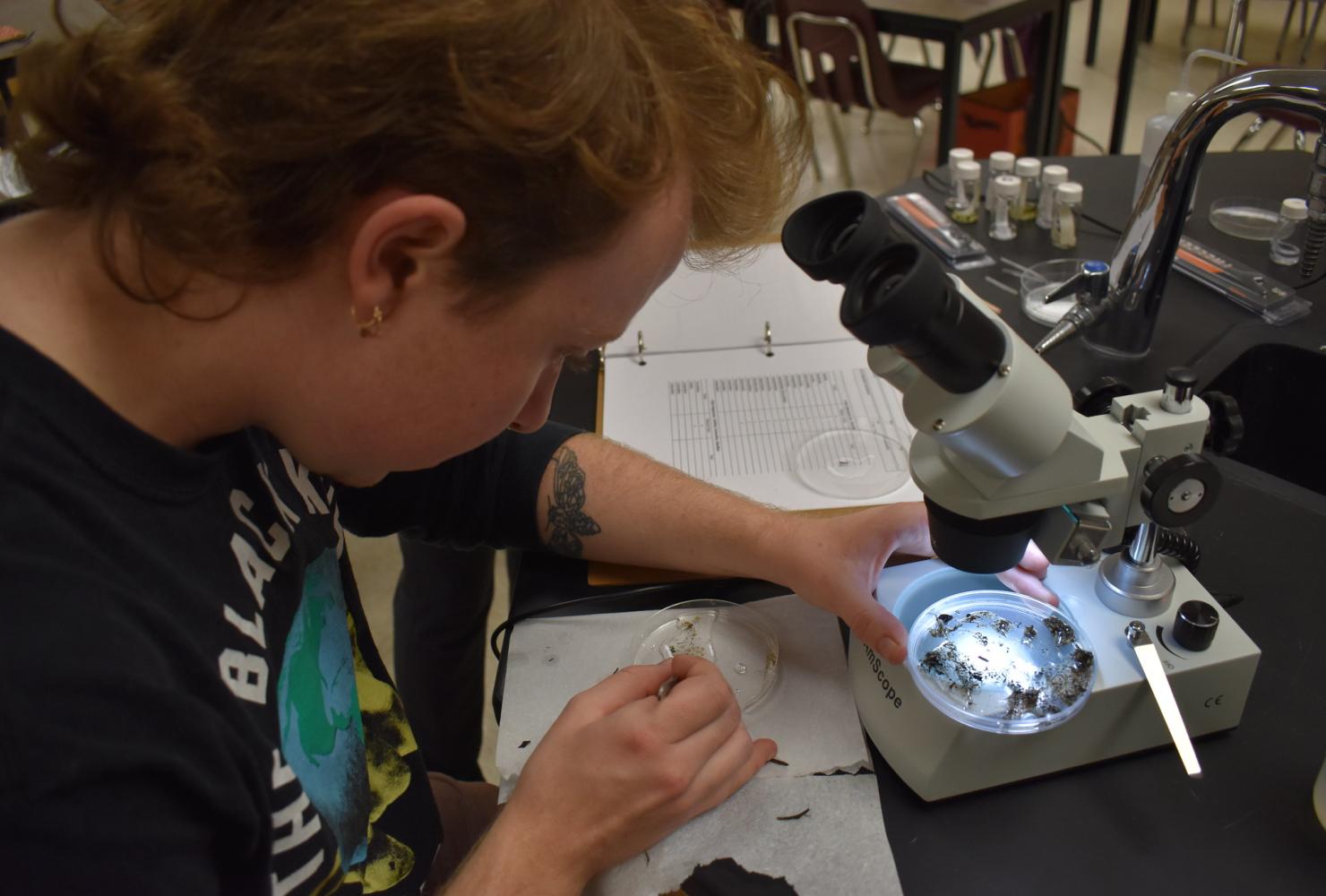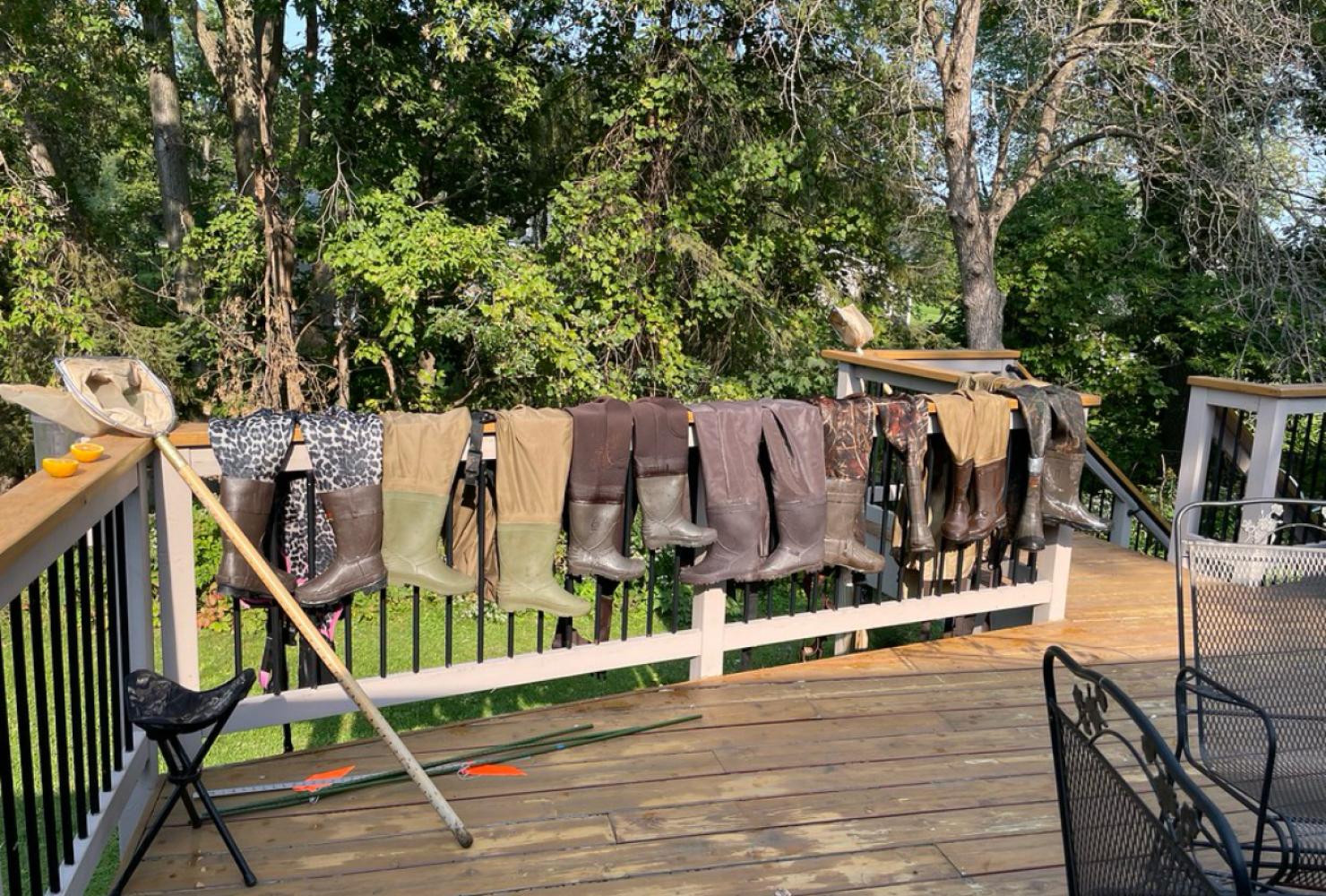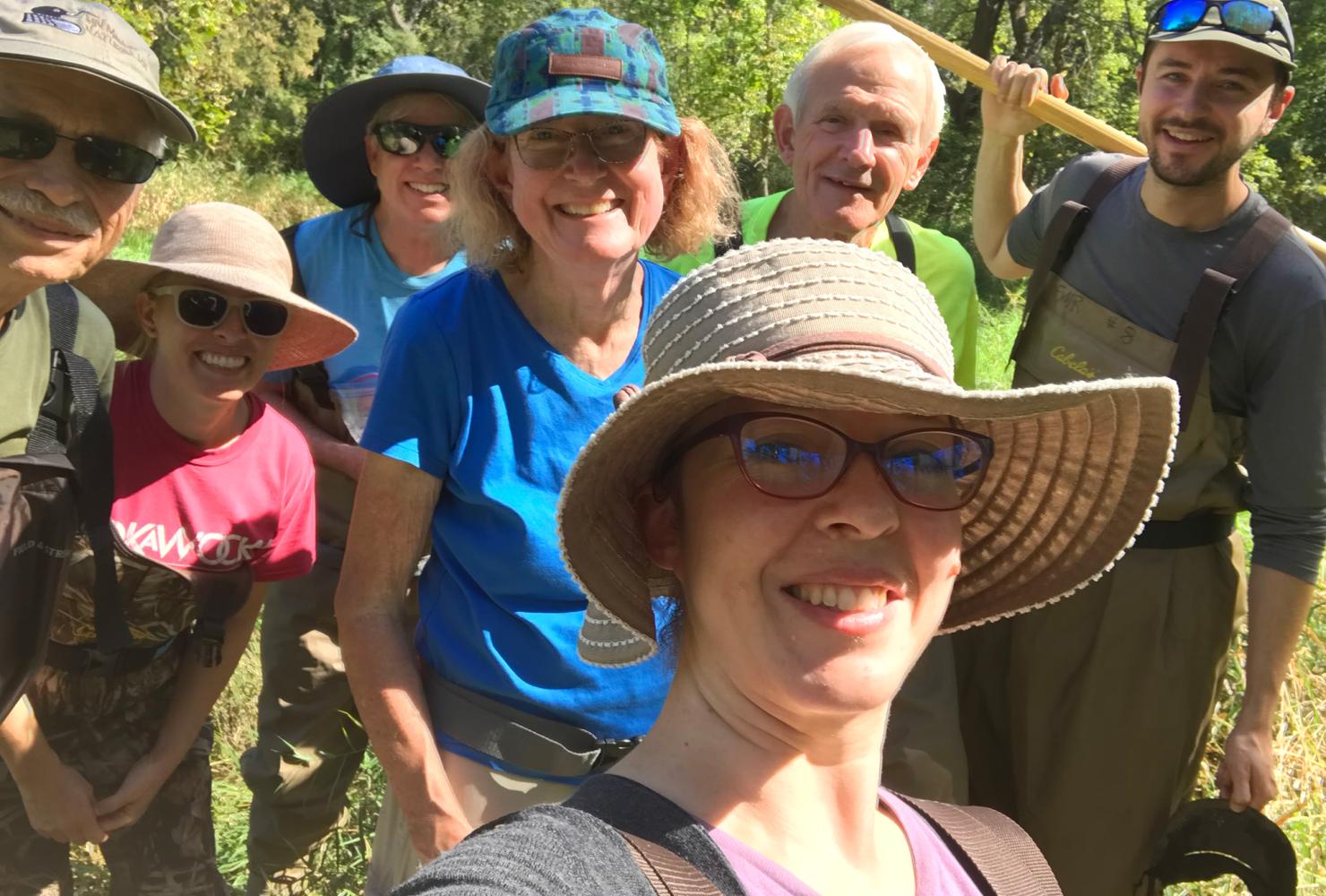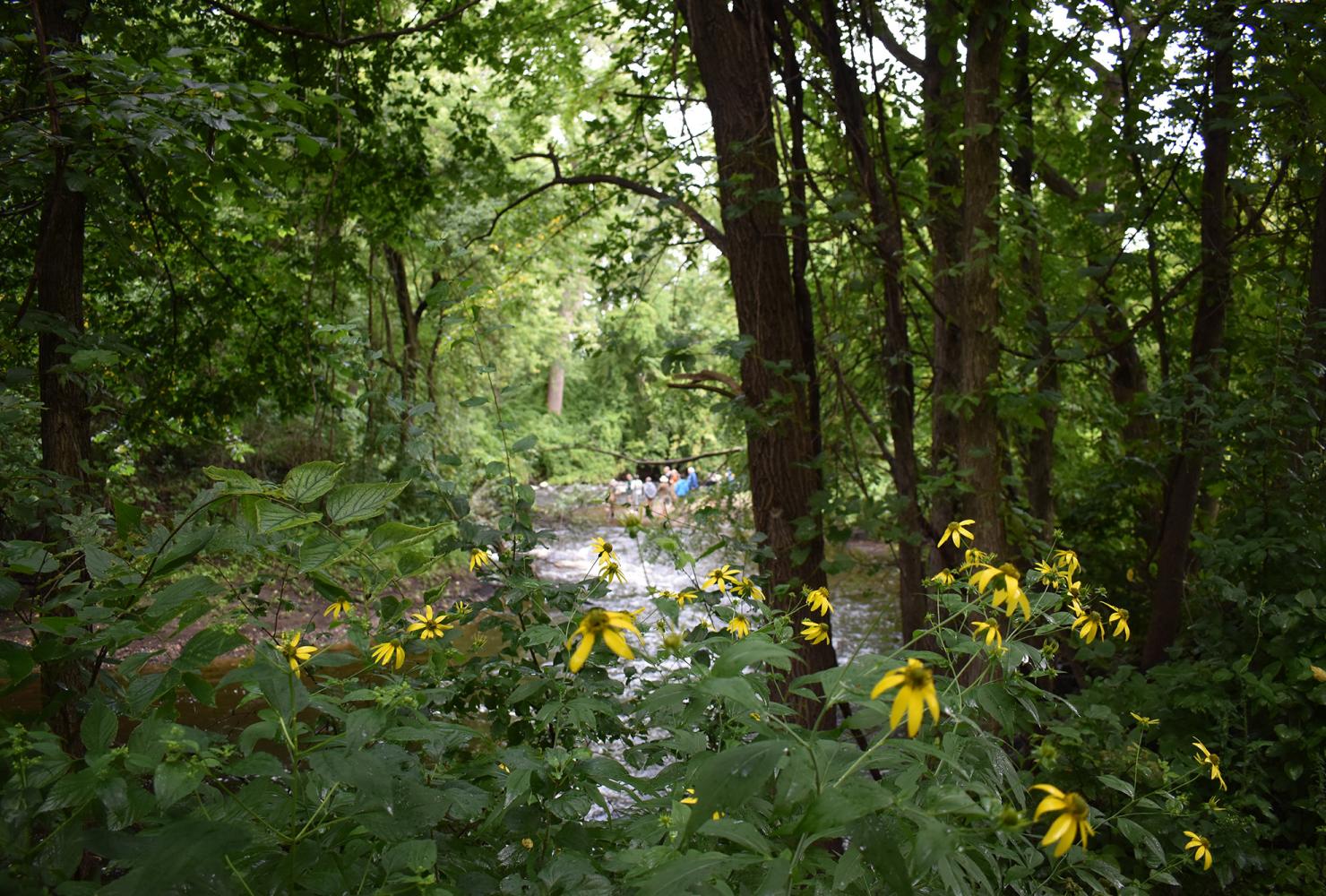Volunteers monitor small insects to gain big insights into water quality
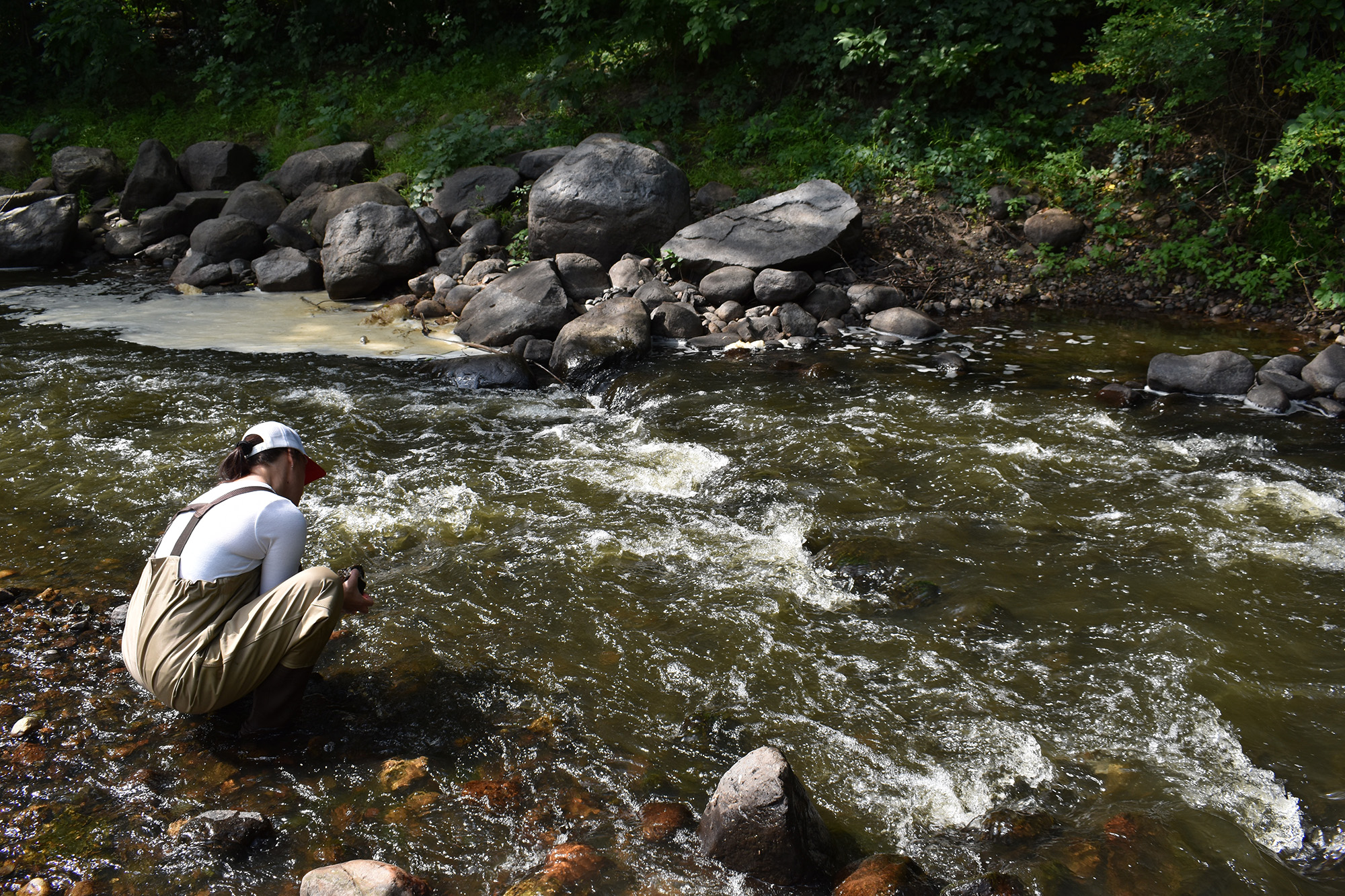
FMR’s Stream Health Evaluation Program has delivered vital scientific data for nearly two decades.
By Christine Schuster
Katherine Majkrzak can trace her fascination with the natural world back to her childhood in northwestern Minnesota's Red River Valley, where she'd collect water from the ditch near her home and gaze at the bugs swimming inside the jar. Although she'd go on to study music composition, she never lost her curiosity about life beneath the water's surface.
Today, both Katherine and her husband, Darrell Majkrzak, are experts in macroinvertebrate anatomy. They own their own microscope, can spot if an antenna has two segments or three, and can distinguish a damselfly from a truefly or a crustacean from a snail.
They've developed their expertise over nearly two decades as volunteers with Friends of the Mississippi River's Stream Health Evaluation Program. SHEP, as it's often referred to, is an award-winning and nationally recognized volunteer monitoring effort that collects scientifically valid macroinvertebrate data in the Rice Creek Watershed District just north of the Twin Cities.
FMR contributes to other ecological research and monitoring efforts, such as annual breeding bird surveys at restoration sites, but SHEP, which is marking its 20th anniversary this fall, is FMR's longest-running scientific data collection project.
Katherine and Darrell, who now co-lead a team of volunteers, discovered SHEP in the program's early days.
"Before I joined the program, I only noticed the things on top of the water," Darrell continued. "Now with SHEP, I realize there's a whole ecosystem under there that's crucial to everything else. I had absolutely no idea that existed."
Lasting relationships and impact
Katherine and Darrell said they've built lasting friendships through SHEP with fellow volunteers in their community — something Darrell said brings him back to the program year after year.
In fact, many of SHEP's 30 volunteers have participated in the program for over a decade — no small feat considering volunteers each serve about 30 hours per year.
While SHEP volunteers lean on each other, they can also depend on the expertise of Katie Farber, the program's contracted partner and field biologist. In addition to leading training and assisting in the lab, Katie, a water resources scientist and education specialist at Bolton & Menk, conducts independent cross-checking to ensure the integrity of SHEP's macroinvertebrate data. On average, she said, SHEP volunteers score around 98-99% accuracy.
"If you talk to any of those volunteers, they know what happened five years ago, 10 years ago, last year and how it looks different this year," Katie said. "I can see all that on paper. But they just go to a site and they're able to assess it visually and perceive things automatically because they're so familiar."
Data to support restoration
Alexandra Jabbarpour, who leads SHEP as a program associate with FMR, said long-term monitoring data is a rarity, but the research outcomes of SHEP and similar programs are vital to help inform natural resource management policy at the watershed level.
The presence of certain macroinvertebrates, which have different reactions to pollution, provides insight into a stream's health.
"Over time, we get different snapshots of what these streams look like," Alexandra explained.
As runoff and stormwater pollution threaten Twin Cities waterways, SHEP's long-range dataset can help illuminate how urban development, agricultural practices and other decisions on land impact water quality.
"SHEP has been a valuable asset for directing and evaluating stream restoration projects," shared Matt Kocian, lake and stream manager for the Rice Creek Watershed District, which has completed several large projects over the last 15 years.
"These data were used to assess pre-project conditions, providing justification for restoration efforts," Matt explained, noting SHEP's data are also used to assess changes afterward.
SHEP samples macroinvertebrates in nine different streams each year. Katie calculates a health score based on those findings. The most recent SHEP report shows those scores are stable or improving in all but one of the streams. That's good news for the Mississippi River, since Rice Creek is an important tributary, and water quality successes in the watershed eventually flow downstream.
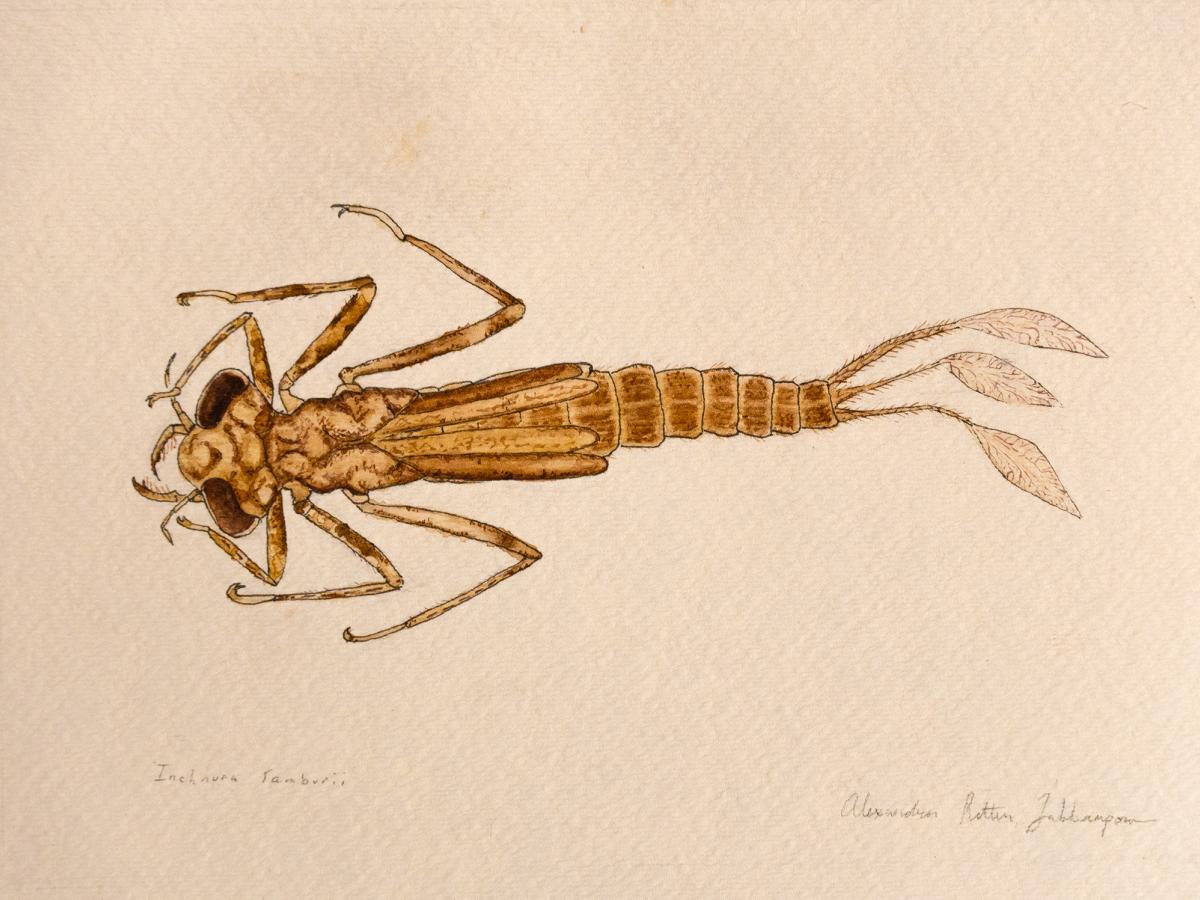
How can aquatic insects help us measure water quality?
Meet three critters our monitoring volunteers sample — and find out what they might mean about stream health.
From streams to fields
Last spring, FMR launched another volunteer monitoring effort, the Pollinator Evaluation Program (PEP), which contributes to Monarch Joint Venture’s Integrated Monarch Monitoring Program.
“It’s a great, established program that we can plug into and know that we’re contributing to a database that’s being actively used by scientists, conservation organizations and government to help improve conservation and restoration for monarchs,” said Dr. Julia Leone, FMR’s pollinator biologist.
PEP volunteers collect data on monarch butterflies at three FMR restoration sites in Elk River, Inver Grove Heights and Hastings. One of those sites is the William H. Houlton Conservation Area, where FMR’s natural resources management plan has guided an ongoing transformation from farm fields to prairie habitat.
FMR’s surveys there will also deliver insight into how pollinators are responding to seeding methods, native plant species and other management practices. Because of volunteer dedication and research, PEP, like SHEP, will help inform restoration efforts for wildlife and water quality well into the future.
